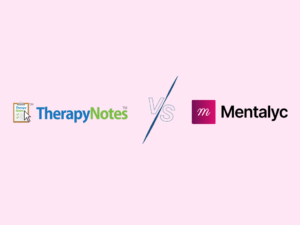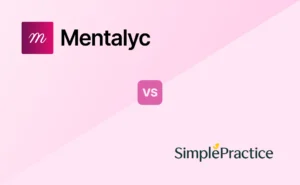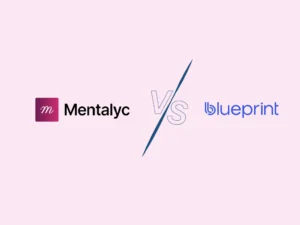The CPT Code 90849 is for multiple-family group psychotherapy, a form of treatment that brings families together to heal. Participants share the therapy space, share their own experiences, support one another, and use this group dynamic to encourage them to grow in one another’s company.
This guide breaks CPT Code 90849 down into uncomplicated, practical sections. It includes its purpose, the conditions for getting it, keeping good records to match demanded documents, and strategies for getting paid. By the end of the book, you’ll know how to use this powerful modality in your practice effectively and support your clients’ healing even more now than ever before.
What Is Multiple-Family Group Psychotherapy?
Multiple-family group therapy is a collaborative treatment method of several families attending a single session together. This family therapy modality is different from traditional group or individual family therapy because it works with multiple families concurrently. These families may share common challenges such as substance abuse, eating disorders, trauma, or other behavioral problems.
This approach creates a supportive atmosphere where families:
- Share personal experiences and solutions
- Learn from others facing similar struggles
- Feel less isolated in their journey
Therapists facilitate these sessions by:
- Structuring the conversation
- Delivering psychoeducation
- Providing real-time coaching based on the group’s needs
While it may not be suitable for every case, multiple-family group therapy is particularly effective in promoting systemic change, especially when caregivers are actively involved. Its impact reflects the strength of shared healing.
Why Use CPT Code 90849?
Code 90849 acknowledges the clinical value of treating many family systems and supplies a payment method for this complex therapeutic format. By using CPT Code 90849, providers get a more consistent return for how this format is nuanced and dynamic, while families win a validating place where they may share and grow.
This code is especially useful when:
- Multiple families face similar challenges (e.g., teens in substance use treatment)
- Caregivers need both psychoeducation and peer support
- Family-based models like the Maudsley approach are used in a group setting
Using 90849 ensures providers are appropriately reimbursed for this format’s nuanced and dynamic nature while families gain a validating space to share and grow together.
What’s Included Under CPT Code 90849?
When billed appropriately, CPT code 90849 contains the following therapeutic components:
Therapeutic Interventions: Organized chats tackling behavioral and emotional patterns; for example, teens investigate coping mechanisms while parents learn boundary-setting.
Psychoeducation: Communicating fundamental ideas, including emotional control, the effects of trauma on families, or good communication.
Skill Development: Tasks may include role-playing or feedback sessions that strengthen assertiveness, problem-solving, and conflict resolution.
Peer Interaction: In a nurturing environment, families learn from one another, developing connections and lowering loneliness.
This combination of education, practice, and community support distinguishes multiple-family group therapy from other formats.
Session Length and Billing Guidelines
Although CPT 90849 is not time-specific, sessions typically last 90 minutes to 2 hours to meet therapeutic objectives.
A typical 90-minute structure:
- 20 minutes – Check-ins and updates
- 30 minutes – Interactive psychoeducational topic
- 30 minutes – Skills practice or group feedback
- 10 minutes – Reflection and wrap-up
Important billing notes:
- Only one billable unit of 90849 is allowed per provider per session, regardless of length or number of families
- The session must meet medical necessity and should not be primarily recreational or educational
Reimbursement Guidelines for CPT 90849
Reimbursement policies vary depending on the payer, state, and setting, so the following are general guidelines:
Private Insurance: Many commercial plans cover 90849 but may require prior authorization. Reimbursement ranges from $40–$90 per family per session.
Medicare typically does not reimburse CPT 90849. Limited exceptions may apply; check with your Medicare Administrative Contractor (MAC).
Medicaid: State-specific. Some states offer reimbursement under behavioral health or intensive programs, while others do not.
Tips to Maximize Reimbursement
- Verify benefits beforehand and obtain prior authorization when needed
- Document medical necessity and rationale for using the multi-family model
- Include appropriate ICD-10 codes and supporting documentation
- Appeal denied claims with evidence-based justifications
Documentation Requirements
Adequate documentation supports both reimbursement and clinical quality. Your session notes should:
- State the clinical goal: You could write, “To improve parent-teen communication around meal planning.”
- Summarize interventions used: For example, role-playing assertive communication.
- Record engagement levels from each family
- Track attendance and absences
- Maintain Confidentiality: Always ****avoid sharing identifiable information about other families
Pro Tip: Use Mentalyc’s documentation templates for group therapy to streamline workflow and ensure accuracy.
When and Where to Use CPT 90849
CPT Code 90849 is typically used in structured settings where families can support one another and work toward shared growth. Some of the most common environments include:
Intensive Outpatient Programs (IOPs): Often geared toward adolescents and adults recovering from substance use.
Partial Hospitalization Programs (PHPs): These programs involve the client’s family as much as possible in the treatment process.
Specialized Treatment Centers: Centers for treating eating disorders, trauma, autism, or other behavioral health concerns.
Schools and Community Health Centers: With the proper permissions, group therapy can be integrated into student support services or community-based care.
Frequency: Depending on their treatment plans, families usually meet with the therapist each week or once every treatment.
Guidelines for Leading Multi-Family Groups
To ensure your sessions under CPT 90849 are of high quality and can be billed, you must plan, follow a structure, and document the process well. Let’s go over a few best practices to follow:
- Set Clear Expectations Early: Let families know the expectations from the very start, including the rules, not sharing personal details, and each member’s duties. Making communication open and transparent encourages trust and reliable relationships.
- Make Sure the Session’s Environment is Safe and Supportive: Support children as they express their feelings and ensure they are respectful and accepting. When people feel safe, they’re more likely to participate meaningfully and engage in the therapeutic process.
- Be Structured—But Stay Flexible: Even though role-plays and psychoeducational talks are helpful, be ready to change direction if something else comes up during the group meeting.
- Write Notes with Purpose: Document all appointments, progress, and clinical plans. Records that capture information accurately improve client outcomes and help with billing and compliance.
90849 vs. Other Family Therapy Codes
It’s important not to confuse 90849 with other family therapy codes:
90847: Conjoint family therapy with one family (may or may not include the patient)
90846: Family therapy without the patient present
Use 90849 only when:
- Two or more families are present and interacting
- The session is structured for shared learning and collaboration
How to Justify CPT 90849 in Clinical Documentation
To support billing and clinical appropriateness:
- Explain the rationale: “This format supports peer feedback and reinforces skills in a family context.”
- List shared goals: “Families worked on boundary-setting and symptom management.”
- Emphasize peer learning: “Families shared strategies and encouraged one another during role-play.”
Common Documentation Errors and Red Flags That Can Lead to Claim Denial
To avoid delays or denials when billing CPT 90849, be mindful of the most common issues practices encounter:
- Missing or vague participant information: Always list which families attended and confirm that multiple family systems were involved.
- Unclear session purpose: Don’t just label it “multi-family group.” Document why this specific format is clinically appropriate.
- Generic or mismatched templates: Avoid using documentation formats for individual or single-family therapy. Customize your notes to reflect the multi-family model.
- Failure to connect to treatment goals: Your session content should directly support specific treatment objectives for each family.
- Overuse of 90849 without justification: Repeated use without updated treatment plans or rationales may flag the claim for review.
- Diagnosis mismatch: Ensure using CPT 90849 aligns with the documented ICD-10 diagnosis and clinical reasoning.
Conclusion
CPT Code 90849 goes beyond a billing system; it is a means to unite families, inspire significant change, and promote healing in a cooperative setting. Carefully applied with clear clinical objectives, robust documentation, and a knowledge of reimbursement requirements, it provides genuine chances for families dealing with challenging obstacles to relate, develop, and mend. CPT Code 90849 guarantees families get the organized support, shared insight, and feeling of community they have to move ahead together.
Whether you’re exploring this approach for the first time or refining an existing group therapy model, 90849 can help ensure families receive the structured support, shared insight, and sense of community they need to move forward together.
Ready to make your documentation easier, faster, and fully aligned with CPT codes like 90849? Mentalyc is designed specifically for therapists. It offers AI-powered, HIPAA-compliant progress notes that save you time while remaining clinically accurate.
Try it free today and see how Mentalyc can streamline your workflow and support your practice.
FAQs About CPT Code 90849
Can I bill 90849 and 90847 on the same day? Generally no. These codes are overlapping. Check with the payer before combining.
Can pre-licensed clinicians bill 90849 under supervision? Sometimes, depending on state laws and insurance policies. Confirm with your licensing board and payer.
Does Medicare reimburse 90849? Typically not, though exceptions may exist under special programs.
What if only one family shows up? If only one family attends your group, you cannot bill 90849. Use a different code, such as 90847 or 90846, depending on the session’s format.
Can 90849 be billed alongside individual therapy? Yes, if both services are provided separately and documented.
Do participating families need to know each other? No. Families do not need to be connected. Diverse perspectives often enrich the experience.
References
AAPC. (n.d.). 90849 CPT code.
Ackerman, C. E. (2020). What is group therapy? 19 activities, types & benefits.
American Group Psychotherapy Association. (n.d.). Practice guidelines for group psychotherapy.
American Psychological Association. (2013). Guidelines for psychological practice with parents and children.
APA Services. (n.d.). Psychotherapy CPT codes.
Centers for Medicare & Medicaid Services. (2024). Medicare claims processing manual: Chapter 12 – Physicians/nonphysician practitioners.
Current Procedural Terminology (CPT®) 2024 professional edition. (2024). American Medical Association.
Early Assessment and Support Alliance (EASA). (2024). Family psychoeducation intervention timeline: Multiple-family groups.
FCBilling. (n.d.). Group therapy billing.
Headway. (n.d.). CPT code 90853: Group therapy overview.
Miklowitz, D. J., George, E. L., Axelson, D. A., Birmaher, B., Rich, B. A., Kim, E. Y., … & Brent, D. A. (2003). Family-focused treatment for adolescents with bipolar disorder: A randomized controlled trial. Journal of the American Academy of Child & Adolescent Psychiatry, 42(12), 1403–1411.
National Academies of Sciences, Engineering, and Medicine. (2019). Evidence-based practices: Family psychoeducation.
Nichols, M. P., & Schwartz, R. C. (2006). Family therapy: Concepts and methods (7th ed.). Pearson Education.
PsychOnline. (n.d.). Billing group psychotherapy with CPT codes 90849 and 90853.
Substance Abuse and Mental Health Services Administration. (2020). Family psychoeducation: Evidence-based practices (EBP) kit.
TherapyNotes. (n.d.). Billing group psychotherapy with CPT codes 90849 and 90853.
Twofold. (n.d.). CPT code 90849 – multiple-family group psychotherapy.
Why other mental health professionals love Mentalyc

“Having Mentalyc take away some of the work from me has allowed me to be more present when I’m in session with clients … it took a lot of pressure off.”
LPC

“It takes me less than 5 minutes to complete notes … it’s a huge time saver, a huge stress reliever.”
Licensed Marriage and Family Therapist

“It’s so quick and easy to do notes now … I used to stay late two hours to finish my notes. Now it’s a breeze.”
Licensed Professional Counselor

“By the end of the day, usually by the end of the session, I have my documentation done. I have a thorough, comprehensive note … It’s just saving me hours every week.”
CDCII







